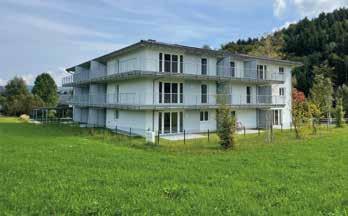Special
Producers of profiles with integrated LED lights
THE EFFECT DETERMINES THE CHOICE VARIOUS INTERESTING FACTS ABOUT THE CHOICE FOR LED STRIPS strips are available in all forms, sizes, and colours and are very flexible. A LED strip works on 12V direct voltage and most LED strips are given a coat of adhesive on the back of the strip to simplify the fastening. Another word of advice: There are some models available which are not watertight, and that’s not such a good choice for application on a profile. And so, be sure to check this. A LED light strip is actually no more than literally a tape onto which dozens of little diodes are fitted. Obviously, the number of diodes varies depending on the length of the strip (up to four to five metres) and the model (a single or double row). You can also cut a LED strip into pieces so that it fits perfectly in the place where you want it. Note: Since LED strips also emit heat, it’s important to integrate them into a ‘cool body’ (aluminium profile). Such a cool body is an asset for maintenance since it protects the LED strip against dust.
Options
Formats and colours
As we’ve said, LED strips are available in all sorts of designs. A summary: - Width: There’s plenty of choice in terms of width, from very thin to very wide. The choice depends mainly on the required effect. If you want a light strip, it’s best to choose a model from 0.5 to 3cm wide. For indirect lighting, an invisible, constant, and wider light is a better choice. - Colour temperature: The heat of the light is expressed in Kelvin (K) and varies from hot to cold. For instance, the colour temperature of very hot white light is about 2,700K. A somewhat cooler white light is about 3,500K. When the colour temperature is 4,000K, a fairly cool white is diffused. - Colour rendering: Apart from the colour temperature, the colour rendering index (CRI) of LED strips is at least as important. The colour rendering index gives the extent to which this equates to natural light on a scale from 0 to 100. For attractive light you can count on a CRI of 80, but professionals prefer a CRI of 90. - Watt per metre: If you are looking for warm soft lighting, a LED strip light of 5 to 10W (Watts) per metre is ideal. You can say that the stronger the light, the more Watts per metre the light contains (obviously with the related higher energy consumption). - Different atmospheres: As with classic LED lamps, you can also opt with LED light strips for a dimmer model. The light varies from cool white to warm white. You can also opt for an RGB LED strip whereby the LED strip even changes colour. - Price and quality: As you have surely noticed, there is now an almost infinite choice in designs and price categories. And so, ask for advice from your supplier to find out which type of LED lighting is best for the specific site which you have in mind.
Generally speaking, a LED strip makes it possible to provide illumination for your house and your profiles in an original and indirect manner. LED
Source: spaarlampen-info.be
Photo – Progress Profiles
In our previous article about profiles with LED lights we explained what LED lights actually are and we briefly considered the LED strip. We defined the LED strip as a product with various applications which you can use to apply light lines and/or highlights in a stylish manner. We also said that it’s about making choices: Do you want main lights or, on the contrary, highlights or sphere lights? In this article we tell you about the various general points which it is best to know about LED strips and what the options are. This means you also know what is best for which use and on which floor it is most suitable. Remember the English abbreviation LED actually stands for light emitting diode.
26
Floor Forum International 119
















